For Angelenos, much of our food gets grown locally. Farms in Ventura County cultivate a lot of the fruits and vegetables that are sold in SoCal farmers’ markets and then served in LA restaurants.
Take the avocado, for example.
It’s the primary crop at Petty Ranch in Ventura County, which grows hass and lamb hass varieties. In 2022 so far, it’s cultivated about 185,000 pounds of avocados, says its manager, Chris Sayer. Within a few years, he hopes to reach the half-million mark.
However, most avocados that Americans consume originate in Mexico, he points out, while Peru and Chile are expanding exports.
Avocado prices seem to constantly fluctuate, and Sayer says that’s due to what’s called alternate bearing, which is when avocado trees have a heavy crop one year and a light crop the next. He also attributes volatile pricing to simple supply and demand.
“For most of this year, avocado deliveries into the United States are running about 40-45 million pounds. And usual American demand is about 50 million pounds a week. So during those periods of time, really up until the middle of July, prices tended to be very high,” Sayer explains.
He adds, “Once we got past the middle of July, and you start to see the second Mexican crop and the Peruvian crop come in, suddenly we started seeing imports running around 60 million pounds a week. And now prices are much much lower.”
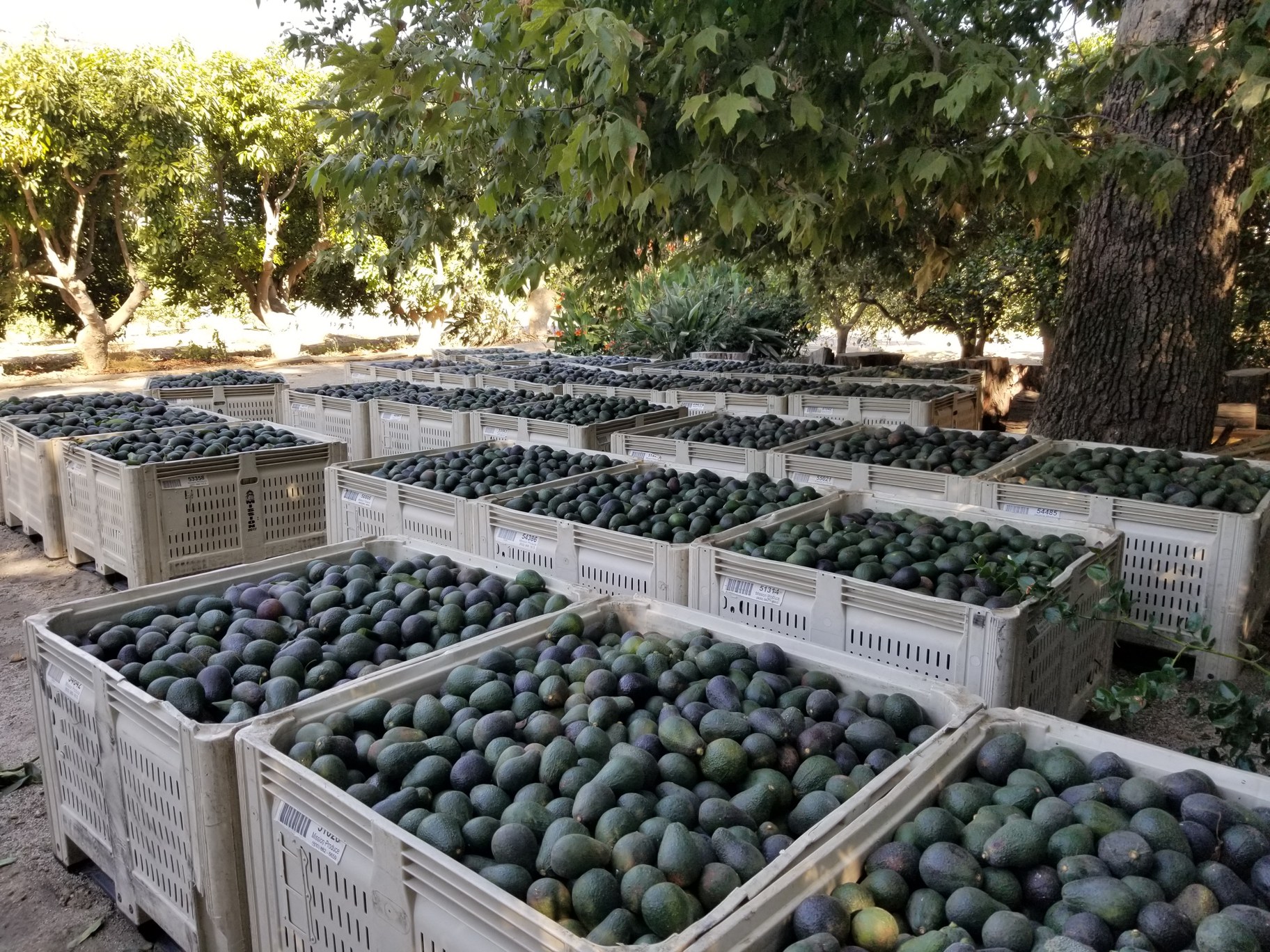
Petty Ranch’s crates of avocados wait to be picked up by Mission Produce during July’s harvest. Photo courtesy of Petty Ranch.
Once the avocados are grown, they travel to a distributor who will pack and send them across the state. That includes Mission Produce, which is based in Oxnard.
“We have a lot of customers that want ripe avocados because we found over the years that when we deliver ripe avocados, the consumer by and large takes them home, eats them a lot more quickly, and then will head back to the grocery store to buy more. So a lot of it depends on what the customer needs and where we're looking to go with it once it comes into our pack house,” says Patrick Cortes, senior director of business development at Mission Produce.
Cortes says that there are certain times of the year when demand for avocados rises exponentially: the Super Bowl, July 4, and Cinco de Mayo. He calls them avocado holidays.
And while it may seem like certain stores have better avocados than others, Cortes says it’s all about how the avocados are handled. He says at Mission Produce, the product is treated the same way no matter what farm it comes from.
“It's all about cold chain. It's all about maintaining the proper standards, and how we ripen the fruit, and how we deliver to various retail chains across the state. And then from there, every retailer will have a different set of protocols. So anytime you see that at the actual store shelf, a lot of that will be just the nuances that would be within specific chains from one to another,” Cortes says.
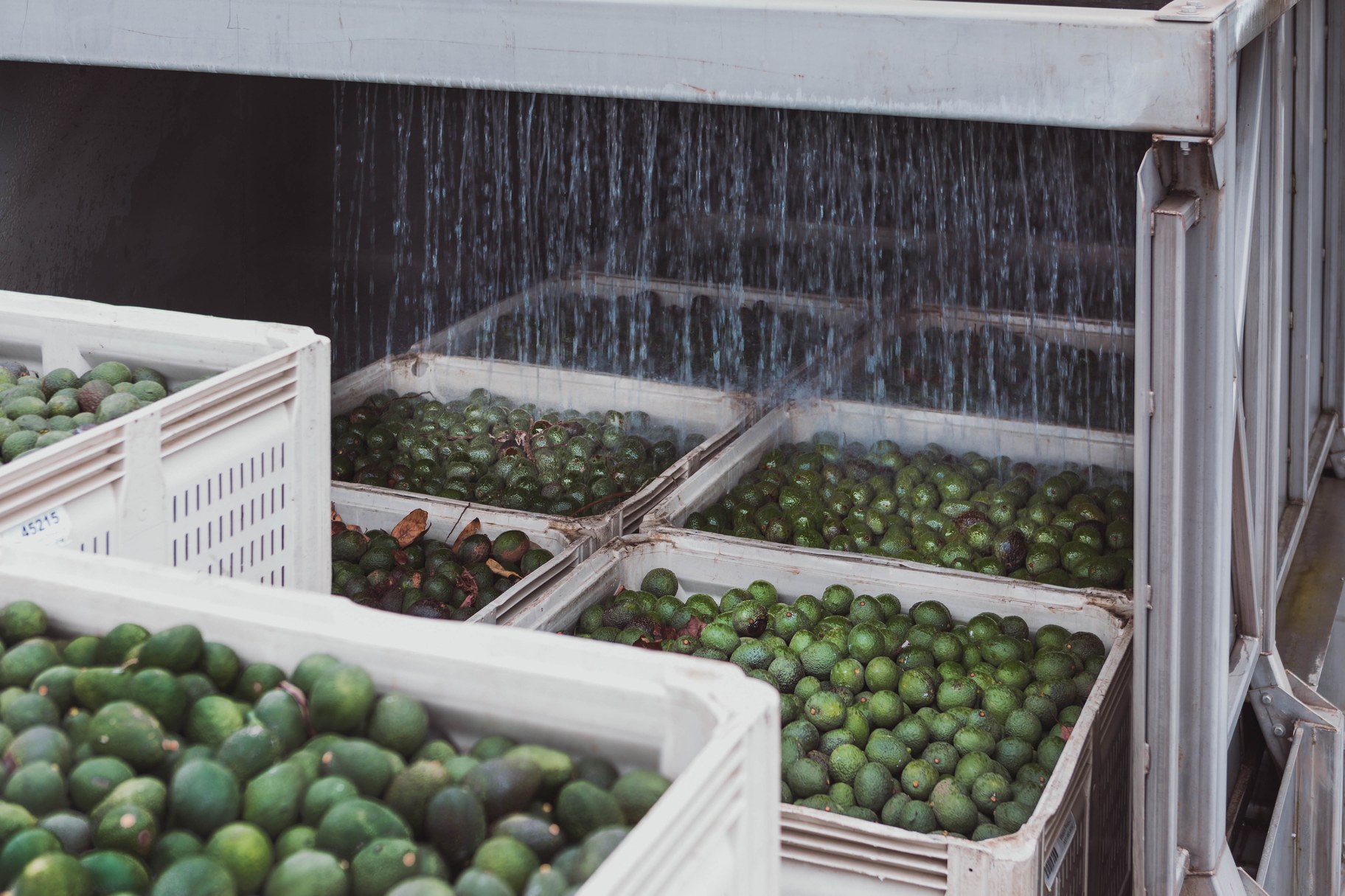
After avocados come in from the field, they are washed and hydrocooled to enhance shelf life and quality. Photo courtesy of Mission Produce.
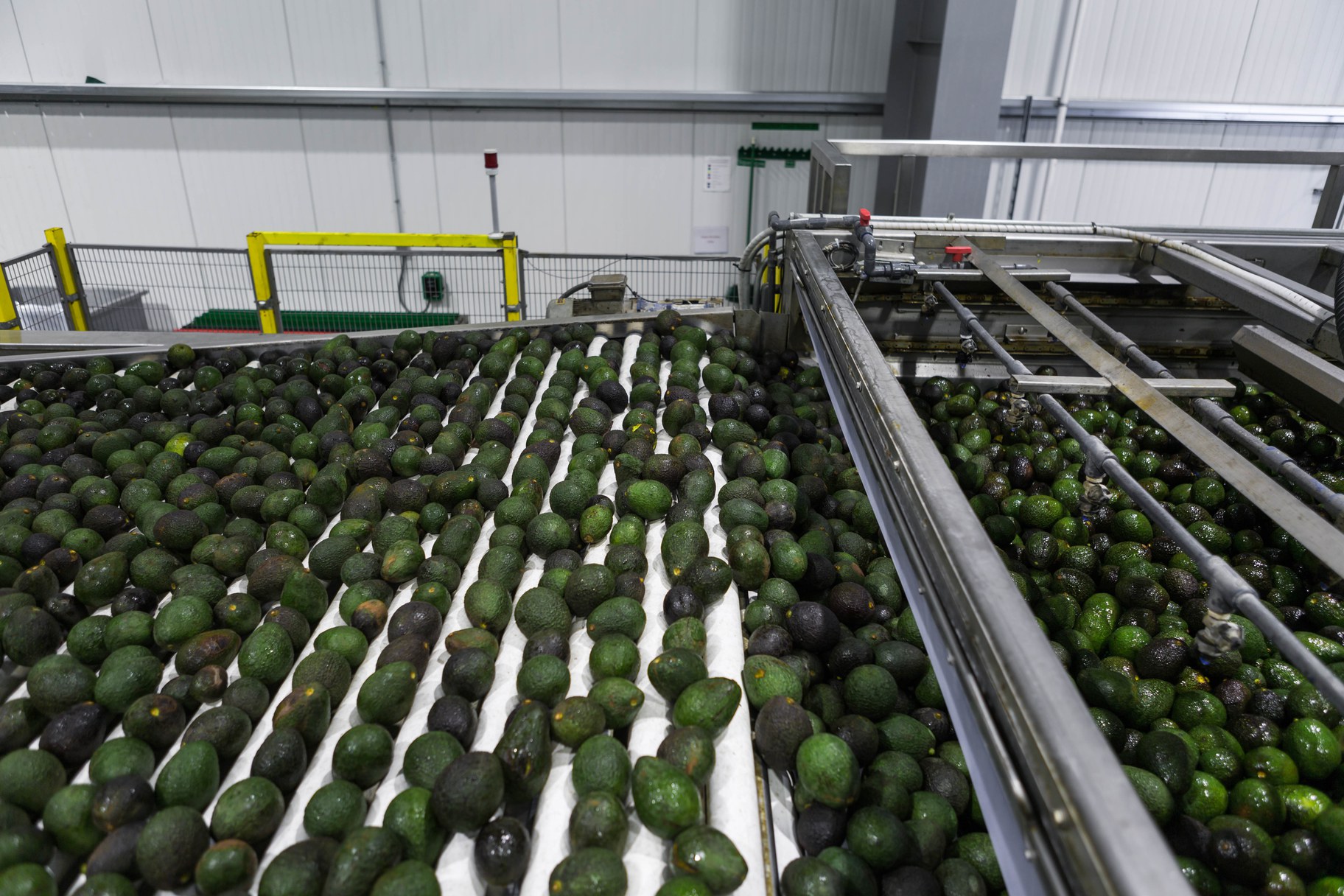
Mission Produce uses state-of-the-art technology to sort and grade avocados by size and quality. Photo courtesy of Mission Produce.
Once the avocado is distributed, it heads to an eatery.
Yeastie Boys Bagels — a fleet of food trucks — uses 175-225 avocados during a typical five-day period, says owner and founder Evan Fox. He gets the fruit from a downtown produce market — not through Mission Produce — where he can ask questions about how to perfectly ripen his product.
“We have to space these things out, how we buy them, and slowly integrate them in our trucks. … We keep them in a dry, warm place and [in] a brown bag. We keep them with bananas. It's really just about spacing the product out because we could go and we can churn through these things real quick.”
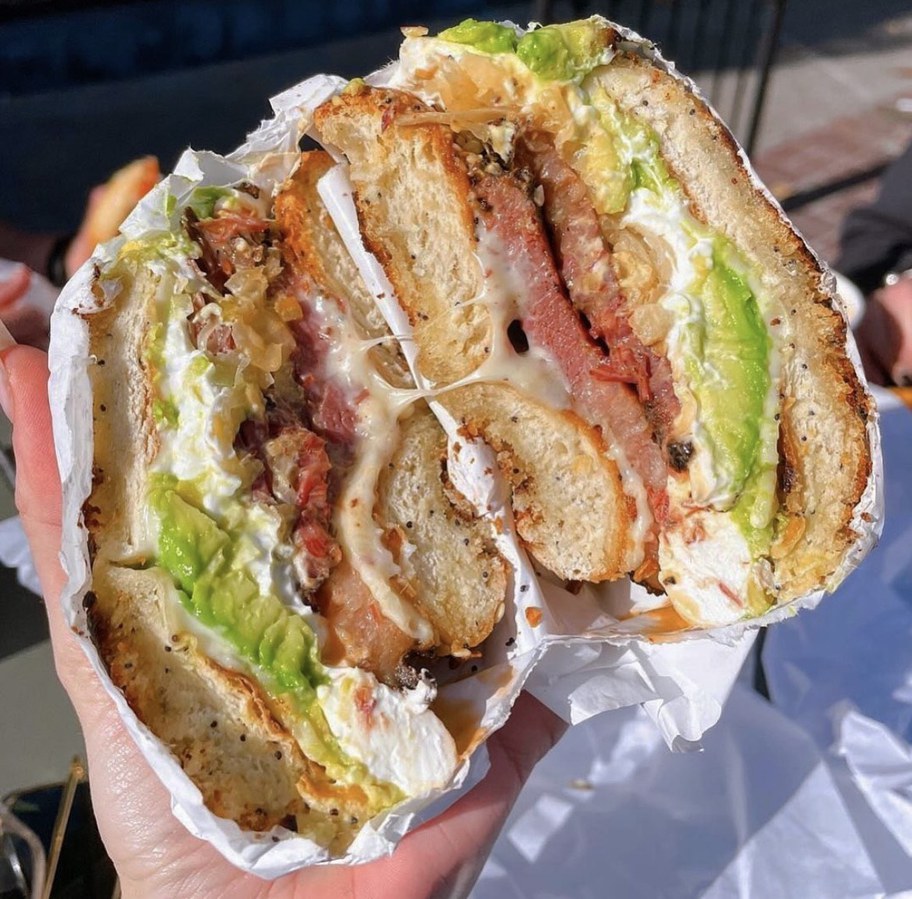
Yeastie Boys Bagels’s “The Reubenstein” is a modified Reuben sandwich because of the avocado. It comes with smoked pastrami, melted Swiss, Russian dressing, and sauerkraut on a hand-rolled inside-out everything bagel. Photo by Isabel Queiroz, courtesy of Yeastie Boys Bagels.
“The belle of the ball” around the world
Sayer says avocados are one the best things California can offer: “It gets consumed year-round, but people think of it as summertime. They think of it as … guacamole or sliced avocado on toast or bagels or sandwiches. It's just becoming a lot more versatile, a lot more accepted. It just is one of those things which people seem to have a love for.”
Cortes adds that avocados are also growing popular around the world as well: “It's becoming more and more ubiquitous across all cuisines. And then you throw in the health aspects. You throw in its crossover into pop culture. I think it's definitely the belle of the ball, so to speak.”
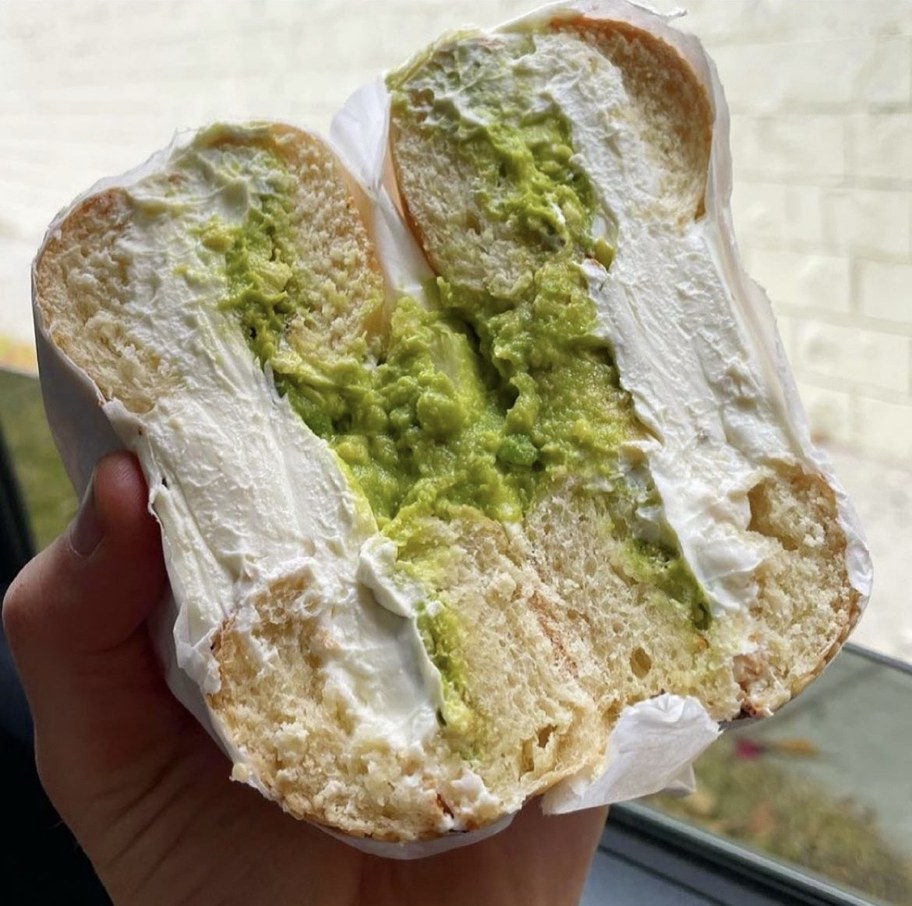
This Yeastie Boys Bagels option features avocado mash and plain cream cheese inside a sesame bagel. Courtesy of Yeastie Boys Bagels.
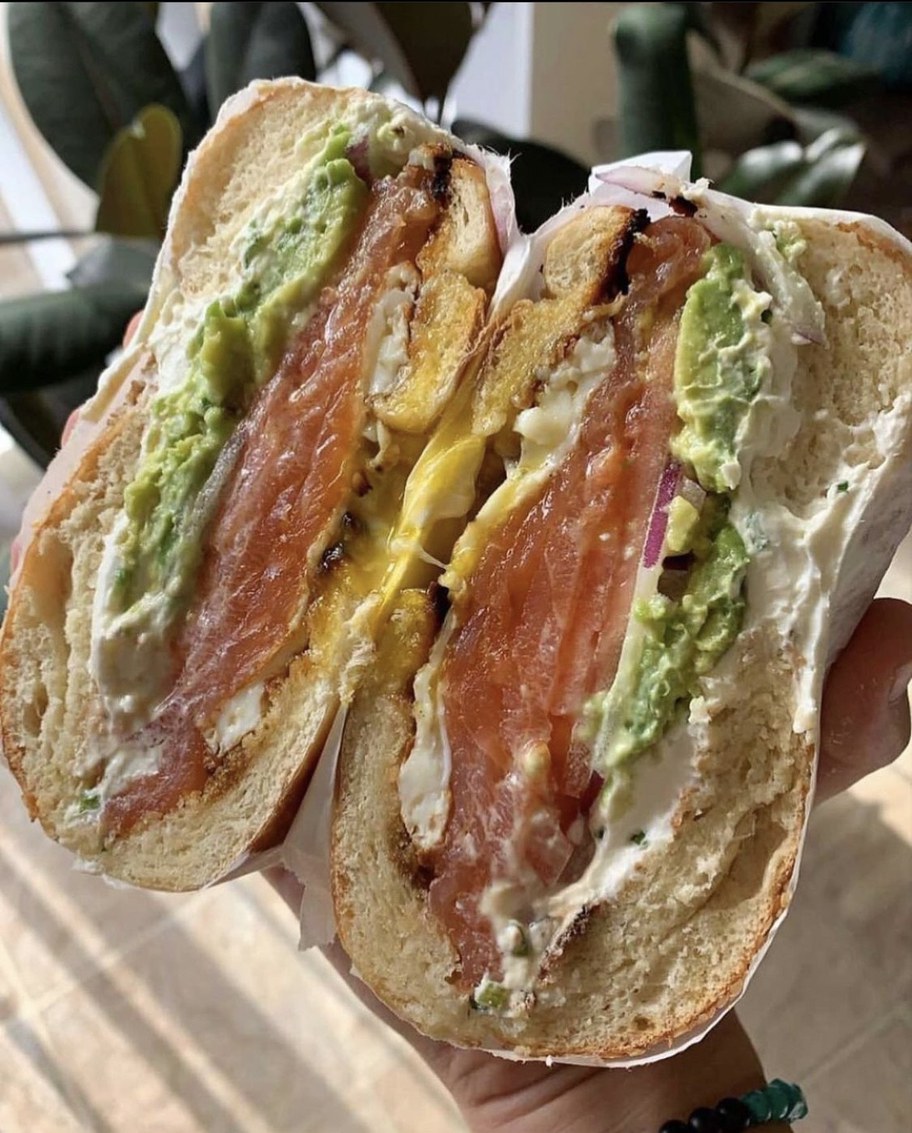
Yeastie Boys Bagels’ “Lox Deluxe” comes with smoked salmon, scallion cream cheese, tomato, red onion, and capers on a hand-rolled Sesame bagel. In this version pictured, fried egg and avocado are added. Courtesy of Yeastie Boys Bagels.
